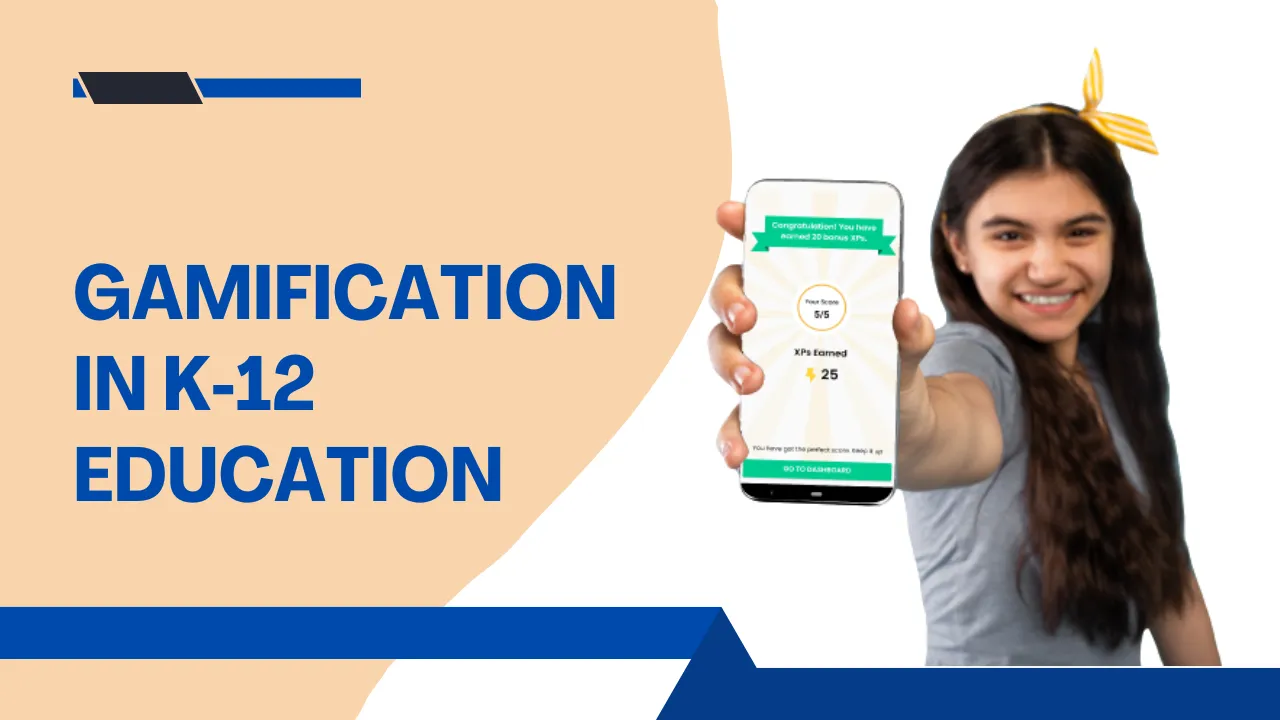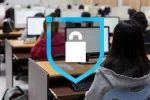Gamification in K‑12 Education: The modern classroom is no longer just about textbooks and lectures. In recent years, educators have embraced innovative tools and methods to enhance student engagement, and one of the most transformative of these is gamification. As attention spans shrink and digital natives expect more interactive learning environments, gamifying education has emerged as a powerful way to captivate students and improve academic outcomes. Especially in K‑12 education, gamification turns ordinary lessons into exciting experiences that stimulate motivation and creativity.
Gamification in K‑12 education goes beyond playing games in the classroom. It integrates game-like elements—such as rewards, progress tracking, storytelling, and competition—into the core teaching process. These methods help students feel accomplished, stay involved, and develop critical skills like problem-solving, collaboration, and persistence. The goal is not entertainment but engagement—with a clear focus on improving how students learn, think, and apply knowledge.
Gamification in K‑12 Education
The concept of gamification in K‑12 education involves applying game design principles to instructional strategies and curriculum delivery. When students earn points for completing assignments, unlock badges for consistent performance, or engage in story-based academic quests, learning becomes interactive. This approach fosters a growth mindset by encouraging students to view challenges as opportunities rather than obstacles. Teachers use leaderboards, missions, timed quizzes, and role-playing to create a classroom environment where learning is both productive and enjoyable. As schools seek new ways to improve participation and achievement, gamification offers a flexible, data-driven path to better outcomes and more enthusiastic learners.
Overview Table: Key Elements of Gamification in K‑12
| Gamification Element | Purpose in Education |
| Points & Rewards | Reinforce good performance and consistent participation |
| Badges & Certificates | Mark milestones and recognize specific achievements |
| Leaderboards | Promote friendly competition and peer motivation |
| Levels & Progress Bars | Visualize growth and build momentum |
| Story-based Lessons | Make academic content relatable and memorable |
| Real-time Feedback | Provide immediate guidance and corrections |
| Collaborative Challenges | Encourage teamwork and communication |
| Choice-based Activities | Let students take control of their learning path |
Why Gamification Works in K‑12 Classrooms
Gamification resonates with students because it mirrors the structure of the games they already play and enjoy. When teachers bring elements of games into the classroom, they create a learning environment that students find both familiar and rewarding. Here are several reasons why gamification is especially effective in K‑12:
- Increased Engagement: Students are more likely to participate when lessons are dynamic, goal-oriented, and offer visible progress.
- Improved Motivation: Gamified systems reward effort, not just results, making students more willing to keep trying even after setbacks.
- Enhanced Retention: Storylines and interactive tasks help students better absorb and recall information.
- Immediate Feedback: Real-time results from quizzes and interactive tasks give students the ability to adjust and improve quickly.
- Personalized Learning: Gamification allows differentiation, letting students progress at their own pace.
How Educators Use Gamification
K‑12 educators implement gamification in a wide variety of ways, depending on subject, grade level, and classroom resources. Here are common methods used:
- Progress Tracking with Levels: Teachers divide lessons into levels, where students must master content before advancing.
- Digital Badging: Students earn digital badges for accomplishments such as reading books, mastering math facts, or displaying leadership.
- Quests & Challenges: Assignments are turned into quests with a storyline, adding meaning and engagement to routine tasks.
- Classroom Currency: Some teachers use virtual currency systems where students earn points they can spend on privileges.
- Peer Competition: Leaderboards show how students are performing compared to their peers, inspiring healthy competition and accountability.
Benefits of Gamification in K‑12 Education
The advantages of gamification are supported by both research and classroom experience. Some of the key benefits include:
- Better Academic Performance: Students in gamified classrooms often perform better in standardized tests and classroom assessments.
- Higher Attendance Rates: When students enjoy school, they are less likely to skip class.
- Improved Behavior: Clear expectations and immediate rewards reduce behavioral issues and encourage positive conduct.
- Stronger Social Skills: Group quests and challenges help students learn to collaborate, communicate, and support one another.
- Positive Learning Environment: Gamified systems build confidence by allowing multiple attempts and celebrating all forms of progress.
Popular Tools for Gamifying K‑12 Learning
Technology plays a major role in the success of gamification. Teachers now have access to a variety of platforms that make integrating gamified elements simple and effective:
- ClassDojo: A behavior management tool that awards points and tracks class progress.
- Kahoot!: A quiz platform that transforms assessments into fast-paced, competitive games.
- Quizizz: Similar to Kahoot, but offers homework features and self-paced learning.
- Classcraft: A platform where students assume characters and complete challenges as a team.
- Minecraft Education Edition: Used for subjects like science, history, and math, with open-ended, creative learning environments.
Common Challenges and Considerations
While gamification offers many benefits, it also comes with a few caveats. Teachers must use it strategically and not rely on it as a gimmick:
- Balancing Fun and Focus: The “game” aspect should support, not distract from, learning goals.
- Avoiding Over-competition: Leaderboards may discourage lower-performing students if not used sensitively.
- Time Investment: Creating effective gamified content can take planning and preparation.
- Equity and Access: Not all students have the same access to digital tools or internet at home.
When used wisely, gamification enhances—not replaces—sound teaching practices. It should support curriculum goals, encourage exploration, and provide room for creativity.
FAQs
1. Is gamification just for younger students?
No. While it’s widely used in elementary and middle school, high school students also respond positively to gamified learning, especially in subjects like history, language arts, and science.
Do students still take traditional tests in gamified classrooms?
Yes. Gamification supplements traditional methods but doesn’t eliminate exams. It’s used to prepare students and make the learning process more interactive.
3. How can teachers start using gamification?
Begin with small changes, like awarding points for completed tasks or introducing badges for reading goals. Tools like ClassDojo or Kahoot can make it easy to start.
4. Does gamification help struggling students?
Yes. It allows students to earn rewards for effort, not just results, helping boost confidence and persistence.
5. Can gamification be used in subjects like math or science?
Absolutely. Subjects like math, science, and language arts can all be gamified using challenges, levels, puzzles, and interactive tasks.
Final Thought
Gamification in K‑12 education is more than a buzzword—it’s a strategic approach that blends the best of education and engagement. By turning learning into a rewarding journey, it makes students more invested in their progress and more motivated to succeed. Whether you’re a teacher, parent, or administrator, exploring gamified strategies can bring new life to your educational environment.
Take the next step: Start with a single lesson, track your students’ response, and refine as you go. Share your ideas with fellow educators and see how gamification can transform your classroom into a hub of curiosity, collaboration, and growth.






